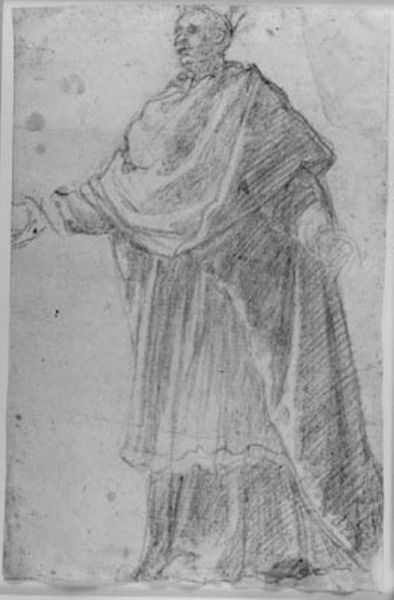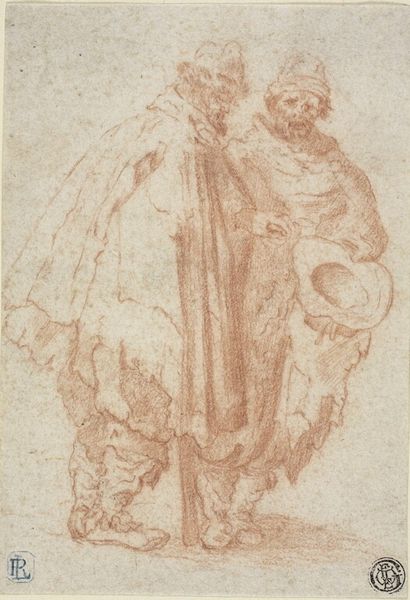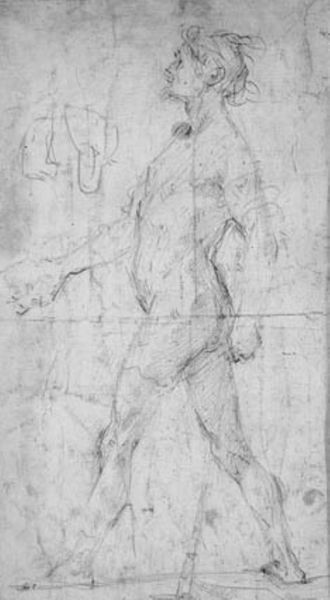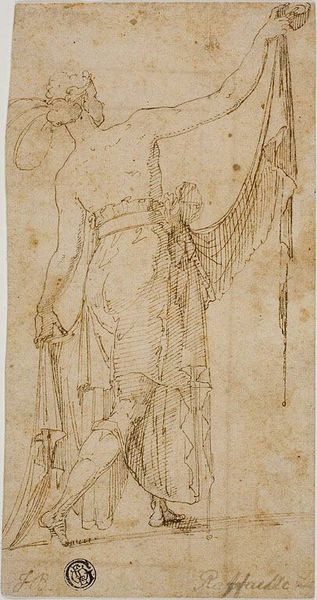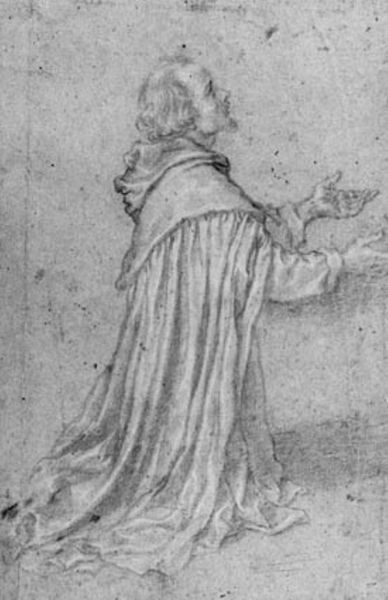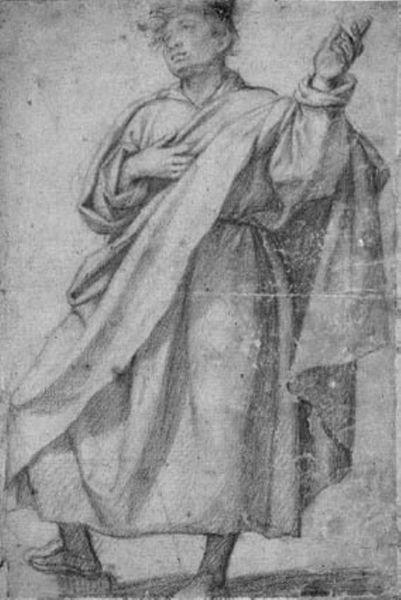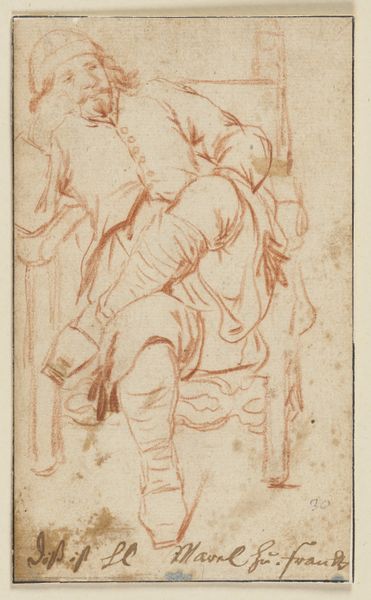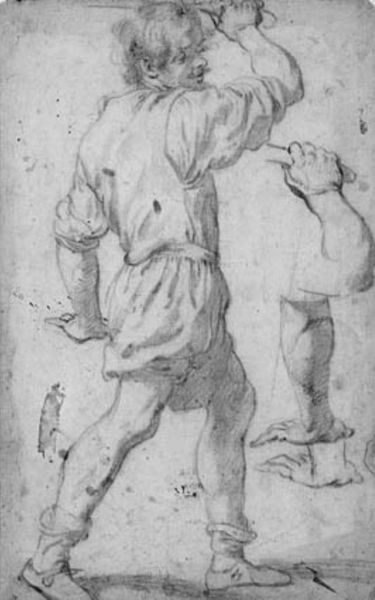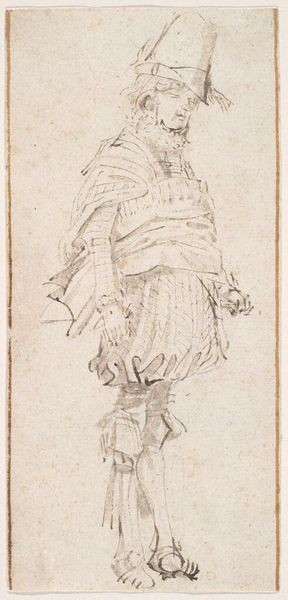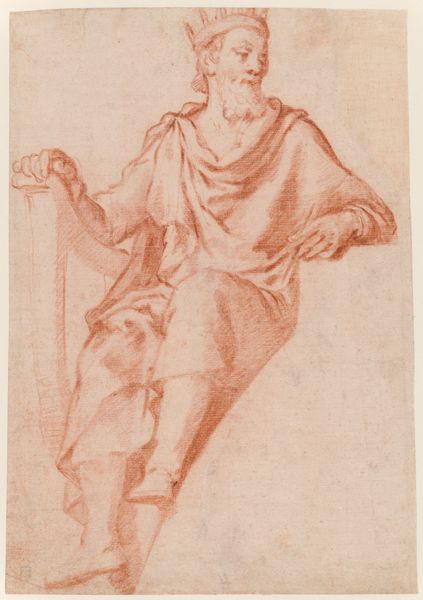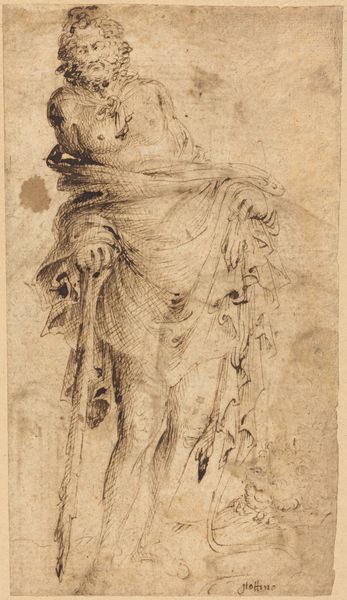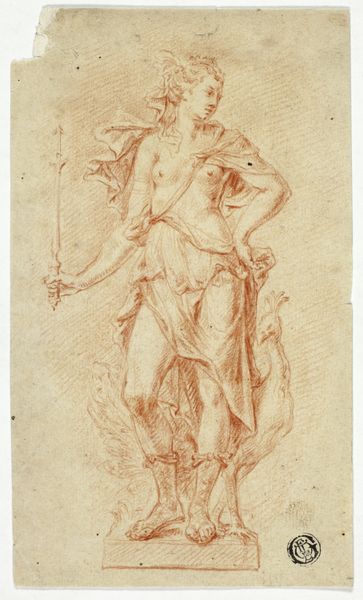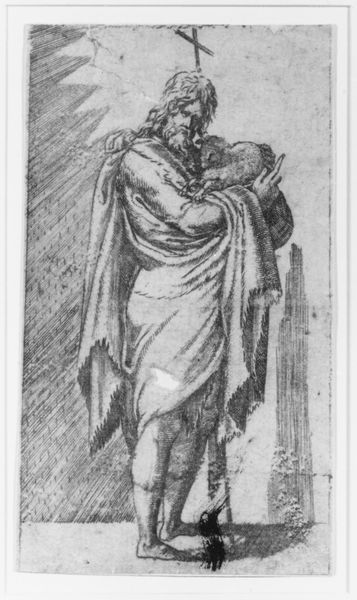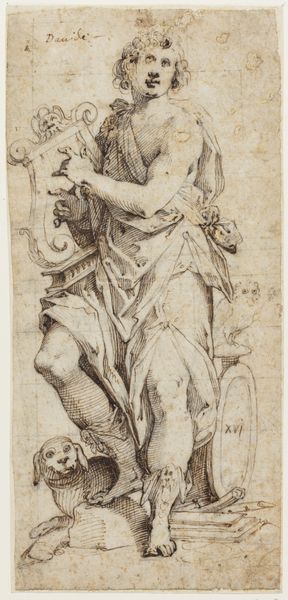
drawing, pencil
#
portrait
#
drawing
#
figuration
#
11_renaissance
#
pencil
#
academic-art
Dimensions: 214 mm (height) x 122 mm (width) (bladmaal)
Curator: At first glance, it feels very dynamic. Even unfinished, there’s a real sense of movement. Editor: Indeed! We’re looking at a pencil drawing titled "Roman Soldier Standing with a Banner," created sometime between 1548 and 1612 by Bernardino Poccetti. It’s part of the collection at the SMK, Statens Museum for Kunst. I find it interesting that Poccetti chose to depict a Roman soldier; what are the sociopolitical implications behind referencing Roman authority during the Renaissance? Curator: Well, think about the physical act of drawing itself, the application of pencil to paper. We are considering Poccetti's selection of inexpensive material that allowed for quick execution, potentially indicative of a preliminary study for a larger, more elaborate commission where precious materials could be later employed. I wonder how this reflects a stratified market within Florentine workshops? Editor: That is an excellent point. Furthermore, we can understand this Roman soldier not just as an artistic rendering, but as a reflection of the intersectional power structures of that era, specifically, how classical ideals were used to uphold contemporary social and political norms. This connects to themes of militarization, gender roles, and the idealization of masculinity deeply ingrained in European history. Curator: Absolutely. And consider how the linear quality and lack of color allow for a direct communication of form. The exposed, unadorned pencil marks are testaments to the artist’s hand and technique. It strips away layers of complexity to foreground skill, practice and labour. Editor: It brings up complex associations about power, heroism, and perhaps the very problematic history of empires and military conquest that still echoes today, no? Even through a single pencil drawing! It asks important questions. Curator: From the raw physicality of creation to its ultimate consumption, tracing that journey shows us that the value of artwork has been, is and remains firmly embedded within the means, materials, and labour involved. Editor: And the very fact that this work, once part of a specific cultural and historical moment, is now here, prompting us to rethink how the past continuously reshapes our present.
Comments
No comments
Be the first to comment and join the conversation on the ultimate creative platform.
